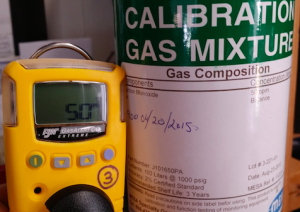Author's posts
Is your Expert qualified?
Make sure your carbon monoxide engineering expert complies “below taken from Early v. Toyota Motor Corp., 2007 U.S. Dist. LEXIS 36011 (E.D. Ky., May 16, 2007). First, a court must determine whether the expert is qualified to offer opinions in a particular subject area. Once the court determines that an expert is qualified to offer opinions in …
Portable Generators – CO poisoning dangers
Carbon Monoxide poisoning and deaths occurs due to portable generator exhaust gas emissions where: Portable generators are used in or close to indoor occupied spaces Portable generators have a design defect Flawed instructions, compliance and training have been provided A carbon monoxide interlock system is not present Technology …
Automotive, Transport and CO poisoning
Carbon Monoxide Poisoning often occurs in cases of vehicular and transportation scenarios that include: Vehicle cabin carbon monoxide pollution via cabin leaks – manufacturer design defects Keyless fob design defects – unintentional engine ON resulting in carbon monoxide poisoning Driver fatigue and unconsciousness due to CO inhalation Intentional and unintentional exhaust gas deaths Occupational carbon monoxide …
Causation & Failure Mode Forensics
More often than not, CO causation can be visually identified due to obvious tell tale signs such as cracked flue vents or physical soot formation and deposits. Investigation may be required to identify misdirected exhaust or natural air diffusion that transports contaminants into the occupant space. Compliance and Verification? Problematic carbon monoxide sources include portable generators, …
Measurement Forensics
Engineering forensic analysis of a carbon monoxide case comprises of well designed CO measurements and/or modeling. This becomes pivotal in non-fatal and/or chronic CO exposure cases where victims suffer neurological damage. Quantifying CO exposure such as “how much CO?”, “what concentration?” and “length of exposure?” are crucial elements in “closing the loop” with physiological evidence. Was the source …
Modeling Forensics
Event reconstruction forensics of ambient CO concentration is undertaken using EPA accredited software and modeling methods to estimate ambient measurements and CO exposure magnitudes: Modeling event reconstruction of CO concentrations – base set of reconstruction analysis with key variables and assumptions. Dynamic and equilibrium modeling – acute or chronic exposure? Mass-balance and proximity effect modeling – …
CO Detector Compliance and Placement
Why didn’t the CO detector alarm? CO laboratory measurements can verify correct operation and compliance with UL2034 “Single and Multiple Station Carbon Monoxide Alarms”. If it is deemed that CO detector alarm and sensor verification of compliance is required, then CO detectors should be tested in a controlled laboratory environment.
Interlock Technology
Technology advancements in carbon monoxide sensor technology could be used to totally prevent carbon monoxide poisoning by triggering interlock and shut-off circuitry in most situations. Most often than not, this could be achieved using economically and practically implemented solutions.








